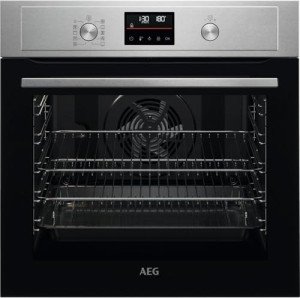The Ultimate Guide to Self-Cleaning Ovens
In today's fast-paced world, devices that simplify home chores are progressively looked for after. One such appliance that has actually gained tremendous popularity is the self-cleaning oven. This ingenious cooking area tool not just cooks meals efficiently but also takes the inconvenience out of cleaning. This article dives into how self-cleaning ovens work, their benefits, maintenance tips, and answers to frequently asked concerns.
Comprehending Self-Cleaning Ovens
A self-cleaning oven is designed to eliminate the need for manual scrubbing. The self-cleaning feature enables the oven to clean itself using high heat to burn off food residues and spills, turning them into ash that can be quickly wiped away.
How Self-Cleaning Ovens Work
Self-cleaning ovens usually use one of two innovations: pyrolytic cleaning and steam cleaning.
Pyrolytic Cleaning:
- Heating aspects raise the internal temperature level of the oven to around 900 ° F(482 ° C
- ). Ovens And Hobs incinerates food debris and spills, reducing them to ash.
- After the cleaning cycle, only the ash remains, which can be quickly cleaned away with a moist cloth.
Steam Cleaning:
- A smaller sized, less extreme cleaning process involves including water to the oven.
- The oven then warms up to create steam that loosens grime and baked-on food.
- After the cycle, users require to clean the interior to get rid of the debris.
Benefits of Self-Cleaning Ovens
Self-cleaning ovens come with many benefits that can enhance the cooking experience.
| Benefit | Description |
|---|---|
| Time-Saving | Decreases the time invested on oven cleaning, enabling for more time to prepare or unwind. |
| Energy Efficient | Most self-cleaning cycles use less energy than conventional cleaning approaches with time. |
| Much better Hygiene | High temperature levels kill bacteria and pathogens often found in food residues. |
| Convenience | No requirement for harsh chemicals or scrubbing, making it safer and much easier to maintain. |
| Durability | Self-cleaning ovens normally have more resilient interiors, safeguarding them versus damage in time. |
Cost Considerations
While self-cleaning ovens are extremely practical, they do typically come at a premium cost compared to standard ovens. Here's a quick take a look at common cost varieties:
| Oven Type | Price Range |
|---|---|
| Fundamental Conventional | ₤ 300 - ₤ 700 |
| Self-Cleaning (Pyrolytic) | ₤ 700 - ₤ 1,200 |
| Self-Cleaning (Steam) | ₤ 500 - ₤ 900 |
Maintenance Tips for Self-Cleaning Ovens
While self-cleaning ovens need less maintenance than traditional ovens, some care is still essential to guarantee long-lasting performance:
- Regular Wipe-Downs: Even with a self-cleaning cycle, it is advantageous to clean down the interior of the oven periodically to prevent extreme accumulation.
- Utilize the Right Cookware: Avoid using cookware that might scratch or harm the interior of the oven throughout cleaning cycles.
- Follow Manufacturer's Instructions: Always refer to the user handbook for specific cleaning guidelines and suggested cleaning frequencies.
- Ventilation: Ensure appropriate ventilation during the self-cleaning cycle as the high temperature levels can release odors or smoke.
- Inspect Gaskets and Seals: Regularly check the door gaskets and seals for wear and tear to keep oven efficiency and safety.
Frequently Asked Questions (FAQs)
1. How frequently should I utilize the self-cleaning feature?
It is typically suggested to utilize the self-cleaning function every few months, depending on usage. Greatly utilized ovens may need more regular cleanings.
2. Can I interrupt a self-cleaning cycle?
It is not recommended to disrupt a self-cleaning cycle as it might trigger damage. If interrupted, allow the oven to cool off before resuming the cycle.
3. Are self-cleaning ovens safe for family pets and children?
While the self-cleaning process is safe, it is best to keep family pets and kids far from the kitchen area during the cleaning cycle due to high temperature levels and possible smoke.
4. How long does the self-cleaning cycle take?
The duration of the self-cleaning cycle can vary, but it usually lasts in between 2 to 4 hours, depending upon the oven model and the level of cleaning required.
5. Can I utilize oven cleaners throughout the self-cleaning process?
No, it is not advised to utilize business oven cleaners during the self-cleaning process as they may produce hazardous fumes and damage the oven's interior.
Self-cleaning ovens represent a significant improvement in kitchen technology, providing a hassle-free response to one of home chores' most tedious jobs. With their safety features, energy efficiency, and ease of use, they are an important addition to any home.
Understanding how to successfully run and keep a self-cleaning oven can ensure a long lifespan and optimum cooking performance. As technology continues to develop, the cooking area will undoubtedly see much more innovations aimed at supplying convenience and efficiency in meal preparation.

